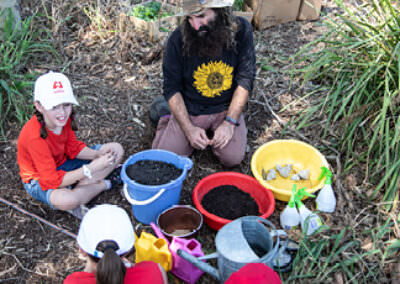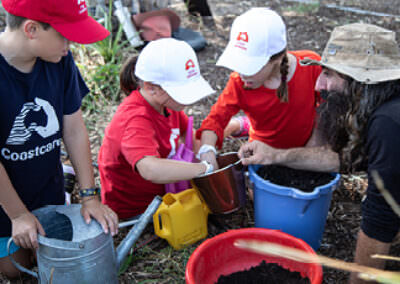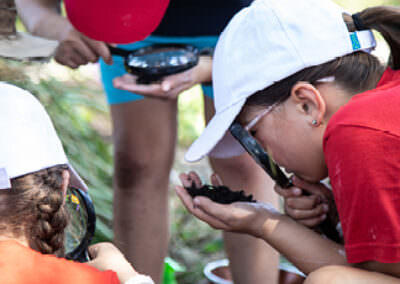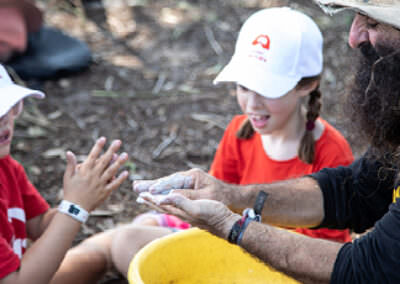
Soil – more than just dirt!
Time Allocation: 30 minutes
Activity Level: Easy
Introduction
Soil is a vital non-renewable resource. Nutrient rich soil gives us clean air and water, bountiful crops, diverse wildlife, healthy forests and landscapes. In this activity we will get our hands dirty to understand how soil texture influences the moisture holding capacity of different soils.
Soil preparation and collection before commencing this activity will assist in the time allocation of the activity.
Checklist
Instructions
 STEP 1
STEP 1
What makes up soil? Discuss that soil is made up of four things. They are pieces of finely ground rock, humus (humus is made up of little bits of decayed leaves and tiny pieces of rotting wood, seeds and decayed plants and animals), water and air.
Why is soil important? Discuss the five essential functions that soil perform.
- Regulating where rain and irrigation water goes.
- Sustaining plant and animal life by providing food and nutrients for plants. It provides a support base for plants in which to spread their roots so they can stand up straight.
- Filters pollutants – the minerals and microbes in soil are responsible for filtering, buffering, degrading, immobilizing, and detoxifying organic and inorganic materials, including industrial and human by-products and atmospheric deposits
- Cycling nutrients – carbon, nitrogen, phosphorus, and many other nutrients are stored, transformed, and cycled through soil
- Supporting structures – buildings need stable soil for support, and archaeological treasures associated with human habitation are protected in soils.
 STEP 2
STEP 2
Find places in your local area that you can use for collecting soil. Go to an outdoor space and conduct a soil texture test with the equipment and the activity sheets. This could be your food garden, a bare patch in the backyard or somewhere that is easy to dig.
To help with time efficiency, collect different soil samples in containers beforehand.
If children are to collect some of their own soil samples for testing, there are a few things to consider. Outline safe digging practices and the importance of not harming plants, and how to return the soil once you have completed the activity.
 STEP 3
STEP 3
What different soils might you encounter in your local area?
- Sandy Soil – is quite dry and light and contains larger amounts of air. Water drains through it easily.
- Clay Soil – contains smaller amounts of air and pieces of finely ground rock. Clay soil is very heavy and sticky when wet and water does not drain through it easily. When clay becomes wet it swells and sticks together. Then as wet clay dries, it shrinks and cracks.
- Loam – with its medium sized particles, has the ability to trap water and retains nutrients for plant use, so it’s great for growing crops and food plants.
Demonstrate how children can use the soil texture key to classify different soil textures.
 STEP 4
STEP 4
Children take each soil sample and wet it gradually with water. Use the activity sheet to help determine texture and to identify the soil.
How does the soil feel? Is it spongy, sticky, sandy or crumbly?
The ribbon test will help to determine what type of soil you have. Can you mould into a ball and then squeeze it into a ribbon between your fingers? If it forms a ribbon of 5cm or more, it will be a clay.
What type of soil have you found?
Which soil will be best for growing your food plants?
What can you do to improve the soil you have?
Clean up with water and return the soil to where it came from.
Extension Activity
Does your soil hold a little or a lot of water? How could you test this?
What could you do to improve your soils capacity to grow food?